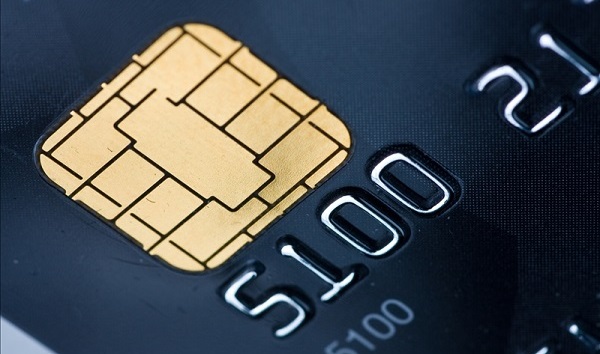Major Banks and credit card companies such as American Express have developed “fraud free” and encrypted chip-enabled cards to cut costs while transferring the burden of fraud compensation onto the merchant. However, many are still unaware that a cheaper and more secure technology already exists.
Chip-enabled cards
The credit card manufacturers have integrated EMV chips (Europay, MasterCard and Visa) into the credit cards, which create unique payment codes for every transaction. The implementation of the EMV technology disables the duplication of payment credentials to settle other transactions.
"Chip-enabled cards have a unique transaction code, specific to that transaction and it changes every time you use the card, explained Monte Cook, executive vice-president of Commerce Bank.” Therefore the fraudsters, if they get data, if they steal your data off the card, they can't use the card.”
According to Cook, credit card fraud costs card issuers and banks around US$3.4 billion annually. He explained that the implementation of the EMV technology could save banks hundreds of millions of dollars per year, as the businesses will be responsible for covering the losses from fraud, not the banks.
“Therefore, we've reduced our losses. The consumer basically comes out ahead too. They don't have to go through the hassle of getting a new card. Making sure that they get reimbursed, etc.” said Cook.
However, businesses may not adopt this change by 2017, which means that businesses will not be installing the new chip-enabled card reading terminals anytime soon.
“EMV is a powerful tool, but it’s only effective if both consumers and merchants are ready to use it for transactions,” NerdWallet’s credit card expert and former Visa strategy analyst Sean McQuay explained. “Consumers need chip cards and merchants need chip readers. If only one side has upgraded to EMV for a specific transaction, then the upgrade was a waste.”
Additionally, these EMV credit cards cannot fix the increasing credit card fraud problem of today. Until all merchants and customers adopt the EMV chip technology and credit cards, data thieves and hackers will go for the lowest hanging fruit, focusing on terminals and customers that still use the traditional magnetic stripe cards.
A better alternative already exists
Despite the attempts of banks and credit card manufacturers to decrease credit card fraud and strengthen customer protection, traditional magnetic stripe credit cards will still be a honey pot to fraudsters at least until the end of 2017.
Instead of spending around US$250 - US$500 apiece for the card readers that may or may not solve today’s credit card security problems, merchants and consumers can use bitcoin via PayPal, BitPay or directly – a much more secure option for all parties since the digital currency is designed not to associate your identity and personal information with transactions.
Now, startups like OneBit are recognizing this opportunity and are trying out several different methods to use bitcoin at any credit card accepting merchants or POS machines. Using NFC technology, OneBit allows anyone to pay with bitcoin anywhere credit and debit is accepted and with lower transaction fees for merchants.

